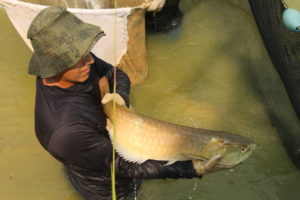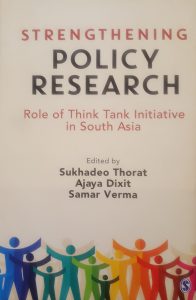Gulab Chand Negi was a happy man. On a freezing February morning, he had just taken a dip at the confluence of Ganga and Yamuna in Allahabad (recently renamed Prayagraj), where millions of devout Hindus had come to wash away their sins at the Kumbh Mela — the bathing festival of Hindus and the biggest gathering of people on the planet. “The water is so clean and refreshing,” said the 68-year-old Negi. “I feel like a new man.” There were nods and smiles from his family of eight.
For the native of Pauri district in the Himalayan province of Uttarakhand that is home to the headwaters of the Ganga and Yamuna, the purity of the Ganga was never in question. But, comparing his previous visits to the bathing festival, he said, “The sangam (confluence) is especially clean this time because of the action the government is taking.”
Several other bathers at the confluence taking the holy dip at the auspicious morning of Mouni Amavasya, the high point of the Kumbh, agreed with Negi. Most of them said the water was much cleaner due to the special efforts that the government had made.
The Kumbh Mela is held by turn at Prayagraj, Haridwar, Ujjain and Nashik. Many millions gather on riverbanks to take a dip that they believe will wash away their sins. In the process, they also further pollute the rivers, which have seen seen their flows reduced drastically recent years.
See: Kumbh Melas start running out of water
Polluted rivers
Most rivers in India are incredibly filthy. A recent report by the Central Pollution Control Board showed that the number of polluted stretches in India’s rivers has increased to 351 from 301 two years ago. The number of critically polluted stretches has risen to 45 from 34, the federal pollution watchdog said.

The Ganga is fit for neither drinking nor bathing in most of its stretches (Data source: state pollution control boards)
The CPCB classifies rivers according to category of pollution, with a category of 3.1-6 mg per litre of Biological Oxygen Demand (BOD) as Category 5, and the most polluted, of 30 mg per litre or greater as Category 1. In one case, the level has been measured as high as 250 mg per litre. The Ganga is considered a Category 4 river, with a BOD of 3.5-8.8 mg/litres.
So how did the Ganga run clean during the Kumbh? Reinforcing the anecdotes of salvation seekers, P.K. Agarwal, general manager of the Ganga Pollution Control Unit at Arail — a neighbourhood in Prayagraj — said not a single drop of untreated sewage was flowing into the Ganga and Yamuna following special efforts to treat the enormous amount of human waste generated by millions of pilgrims.
“We have laid sewer lines throughout the Mela grounds and have augmented our treatment capacity,” Agarwal claimed. “We are treating 99% of the sewage, which is why the rivers are so clean this time.” He attributed this achievement to the funds made available through the National Mission to Clean Ganga (NMCG) and the extra efforts by Jal Nigam, the government utility that manages water supply and sewage treatment in the city.

wastewater drains are common throughout the river basin [image by: Soumya Sarkar]
Band-Aid solutions
River experts and activists say that the transformation of the Ganga and Yamuna at Prayagraj amounts to “event management,” as many experts termed it, and will unlikely be sustained over the long term. “It is an election period chimera at best. When an Ardh (half) Kumbh could be turned into a Kumbh for obvious reasons, anything and everything could be claimed. What they have done is to release 6-7,000 cusec (cubic foot per second) of water in Ganga from the Tehri dam in a period when normal flow in the river, with all dams and barrages upstream, does not exceed 1,000 cusec,” said Manoj Mishra, Convenor of the Yamuna Jiye Abhiyan (Living Yamuna Campaign). “Obviously, with good dilution water in the river, it would appear rejuvenated. But for how long?”
“These are Band-Aid solutions and temporary at best,” said river expert Himanshu Thakkar, coordinator of the South Asia Network on Dams, Rivers and People, a non-profit. Thakkar feels that unless there is an overhaul of the governance system, such attempts at keeping the river clean will prove futile.
Prime Minister Narendra Modi, a parliamentarian from Varanasi, some 125 km downstream from Prayagraj, vowed to clean the Ganga on the bathing ghats (steps that lead to the river) of the holy city after he was elected in 2014. He launched the Namami Gange (Salutations to Ganga) programme to clean the river and its tributaries, with a huge allocation of more than INR 200 billion (USD 2.8 billion) to be spent by the end of 2019. The government also renamed the Ministry of Water Resources as the Ministry of Water Resources, River Development and Ganga Rejuvenation to indicate the seriousness of its intent.
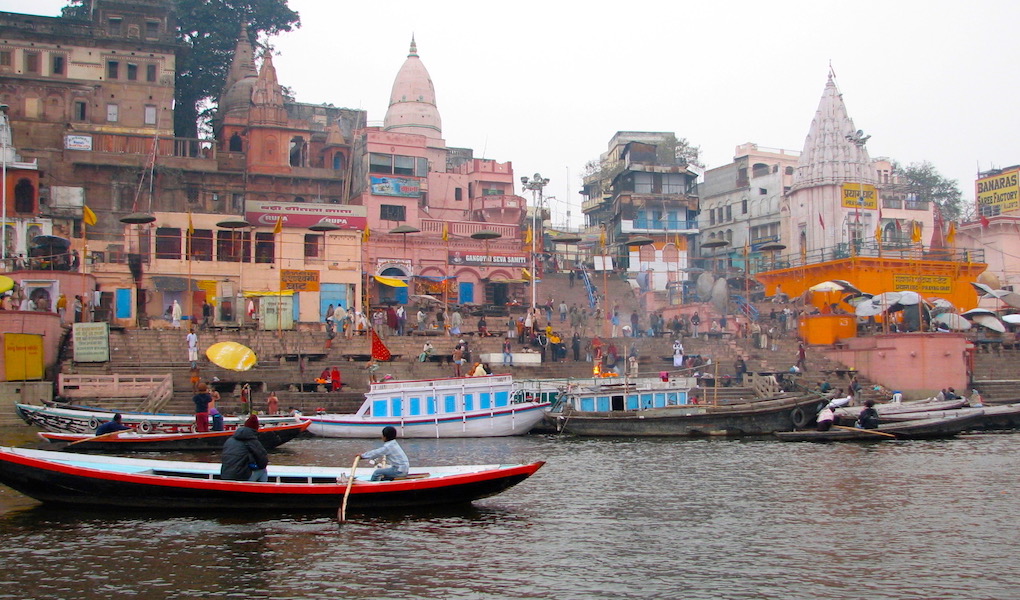
although there has been some cosmetic cleaning of the ghats in recent months [image by: Soumya Sarkar]
In 1993, under then Prime Minister P.V. Narasimha Rao, a new batch of STPs was added not only along the Ganga but also its main tributaries such as the Yamuna, the biggest. Several thousand kilometres of sewer lines were added. In 2009, the Manmohan Singh government established the National Ganga River Basin Authority to take a more holistic approach to clean the basin and maintain free flow of the river. But the emphasis remained on building STPs.
Despite all these efforts, the Ganga is more polluted today than it was in the 1980s.
Primary pollutant
The discharge of untreated sewage into the Ganga and its tributaries is undoubtedly the primary cause of pollution. This is responsible for 80% of the pollution in the Ganga. The other 20% is industrial and agricultural waste, according to official data.
This is the main reason why building a network of efficient STPs is important, according to Vinod Tare, a professor at the Indian Institute of Technology (IIT) Kanpur and lead author of the Ganga River Basin Management Plan. A consortium set up in 2010 by Jairam Ramesh, India’s environment minister at that time, of the seven main IITs prepared the plan that was submitted to the government of India in 2015.
The Ganga basin is one of the most densely populated areas in India. There are more than 1,500 cities and towns in the basin, out of which the major cities — Delhi, Kolkata, Meerut, Kanpur, Allahabad, Varanasi and Patna — have populations exceeding 1 million each. The mega urban agglomerations around Delhi and Kolkata are home to more than 15 million people each.
India has been urbanising at a rapid pace. In the Ganga basin cities, population increased from 75 million in 1991 to 165 in 2011, according to the Census of India. This exponential rise has led to a corresponding increase in sewage, but not in sewage treatment.
NMCG says that the 10 largest cities on the Ganga alone account for more than 80% of the nearly 3,000 million litres of sewage that is discharged into the river. This excludes New Delhi, which pours over 2,000 million litres daily (MLD) into the Yamuna. “There is absolutely no way to keep the Ganga free from pollution if we are unable to treat the enormous amount of sewage generated in the cities along its course,” Tare said.
The official estimates of sewage is much below the actual amount because more than a fourth of the urban population in India live in unauthorised slums and shantytowns that are not linked to the sewage network. The waste from these places usually flow into storm water drains and ultimately flows into the river untreated.
Not keeping pace
The installed capacity of STPs in the Ganga basin does not exceed 1,500 MLD, according to CPCB. The Namami Gange programme has sanctioned INR 247 billion (USD 3.5 billion), the government said in Parliament at the end of 2018. A lion’s share of that will be spent on treatment plants.
While there is little dispute over the importance of STPs, the government’s approach on focussing on only big STPs has been criticised by experts.
The focus of central government spending on reviving the Ganga river basin remains overwhelmingly on sewage treatment plants [Source: National Mission for Clean Ganga, December 2018]
“Our experience of trying to clean the Ganga and Yamuna for the past 30 years teaches us that the focus has to shift away from mega STPs,” said Thakkar. “Delhi has the highest STP capacity in the country. But that hasn’t stopped the Yamuna from becoming a dirty drain.”
“STPs upkeep in Delhi is a classic case of how sewerage management should not be carried out,” argued Mishra. “The government’s focus on STPs as the solution to river woes has failed repeatedly, first with Ganga Action Plan, then with Yamuna Action Plan, and shall unfortunately fail again under Namami Gange.”
The focus on large scale sewerage concentrates everything on one aspect, whereas pollution reaches the river through multiple avenues. A more decentralised structure could be more adaptive, and would focus on the source of the pollution, but this approach has not been followed.
Strong criticism
Thakkar has been a fierce critic of the Namami Gange programme of the current government. “The quality of water has deteriorated in the past four years, even in Varanasi,” he said, adding that even the Comptroller and Auditor General (CAG) of India has found serious deficiencies and shortfalls in almost every aspect of the programme.
A large portion of the funds allocated to build sewage infrastructure remains unspent [Source: National Mission for Clean Ganga, December 2018]
“(The) National Mission for Clean Ganga could not finalise the long-term action plans even after more than six and half years of signing of agreement with the consortium of Indian Institutes of Technology,” the CAG said in a 2017 report.
Ruling party politicians have not helped matters by making extravagant forecasts. “In just 10% work of the Rs 26,000 crore (USD 3.68 billion) project currently underway, the Ganga has started getting cleaner,” Water Resources Minister Nitin Gadkari was quoted as saying in a media report. “By March this year, 30-40% of the work will be completed, and by March next year, Ganga will be 100% clean.”
“Keeping a river clean is a continuous process,” said Thakkar. “How can it have an end date?” It is not just experts who understand this. “I’ve been coming to the Magh Mela for the past few years and have seen that it doesn’t matter how well it is organised,” said Chittaranjan Haldar, a sanitation worker from West Bengal deployed by a government contractor at the Prayagraj Kumbh. “You have to keep cleaning. Otherwise the filth piles up again.”
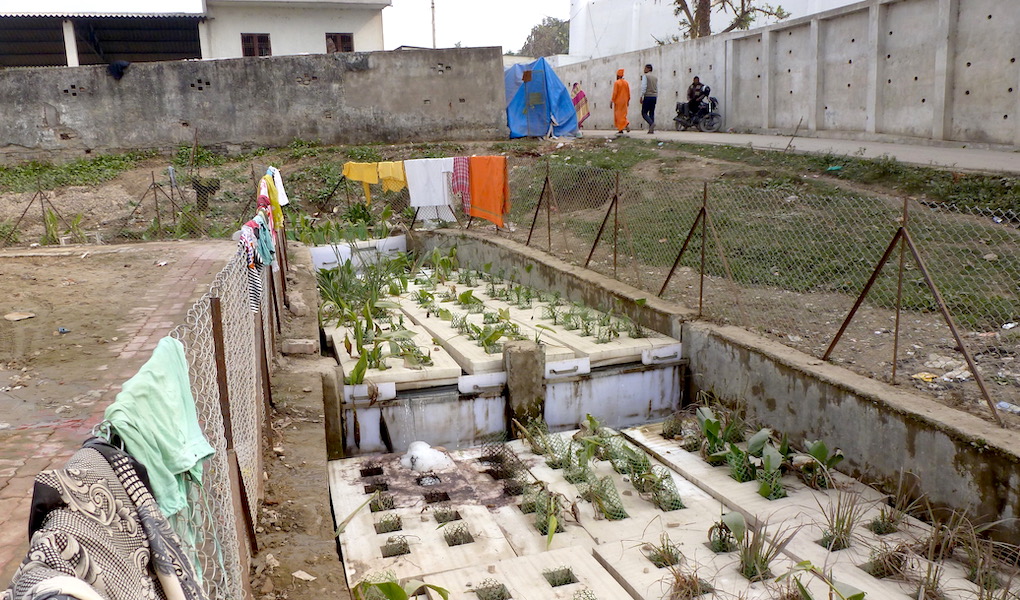
innovative projects seek to lower the cost of sewage treatment [image by: Soumya Sarkar]
Decentralised solution
Promoting small and decentralised STPs is a better solution to keep untreated waste from reaching the river, experts said. “A river should not be treated as the end destination of any waste or used water, be it domestic or industrial. Every city and industry must be zero discharge as far as any nearby water body or a river is considered,” said Mishra.
“Decentralised management of domestic effluent is the only answer,” says Somnath Bandyopadhyay, associate professor at the School of Ecology and Environment Studies in Nalanda University, Bihar. “Smaller, decentralised and localised solutions work better simply because they are simpler and could be adapted to the specific needs and managed better.”
The problem becomes even more intractable when it comes to industrial effluents, says Bandyopadhyay, who earlier worked for the National Ganga River Basin Authority.
“Central effluent treatment plants (CETPs) [which treat industrial waste] face a different set of challenges. It is an unknown cocktail that it has to deal with. One solution is some amount of pre-treatment and quality-based charges imposed on quantities discharged by individual factories,” Bandyopadhyay said. But transferring the liability from industries to the CETPs might work better, he added.
Bandyopadhyay’s comments point to the economic aspects of making any cleaning programme sustainable. Experts say that municipalities and city corporations need to be empowered to tax citizens to pay for waste treatment if such efforts are to be made sustainable rather than depend on government dole all the time.
“If we can pay for the food we eat,” said Tare. “We should also be made to pay for the waste we generate.”
![<p>The tent city at the confluence of the Ganga and Yamuna. The Kumbh Mela at Prayagrajthis year attracted more than 300 million people over a month and a half [image by: SoumyaSarkar]</p>](https://dialogue.earth/content/uploads/2019/03/Ganga1a.jpg)

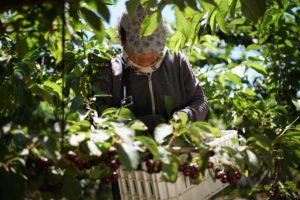

![A wild Bengal tiger in Bandhavgarh National Park in Madhya Pradesh [Image by: Mark Smith/Alamy]](https://dialogue.earth/content/uploads/2015/01/wild-tiger-300x200.jpg)
![Jagdishpur lake in Nepal, full of birds [image by: Manoj Paudel]](https://dialogue.earth/content/uploads/2019/03/Birds_Manoj-Paudel_17-300x142.jpg)

